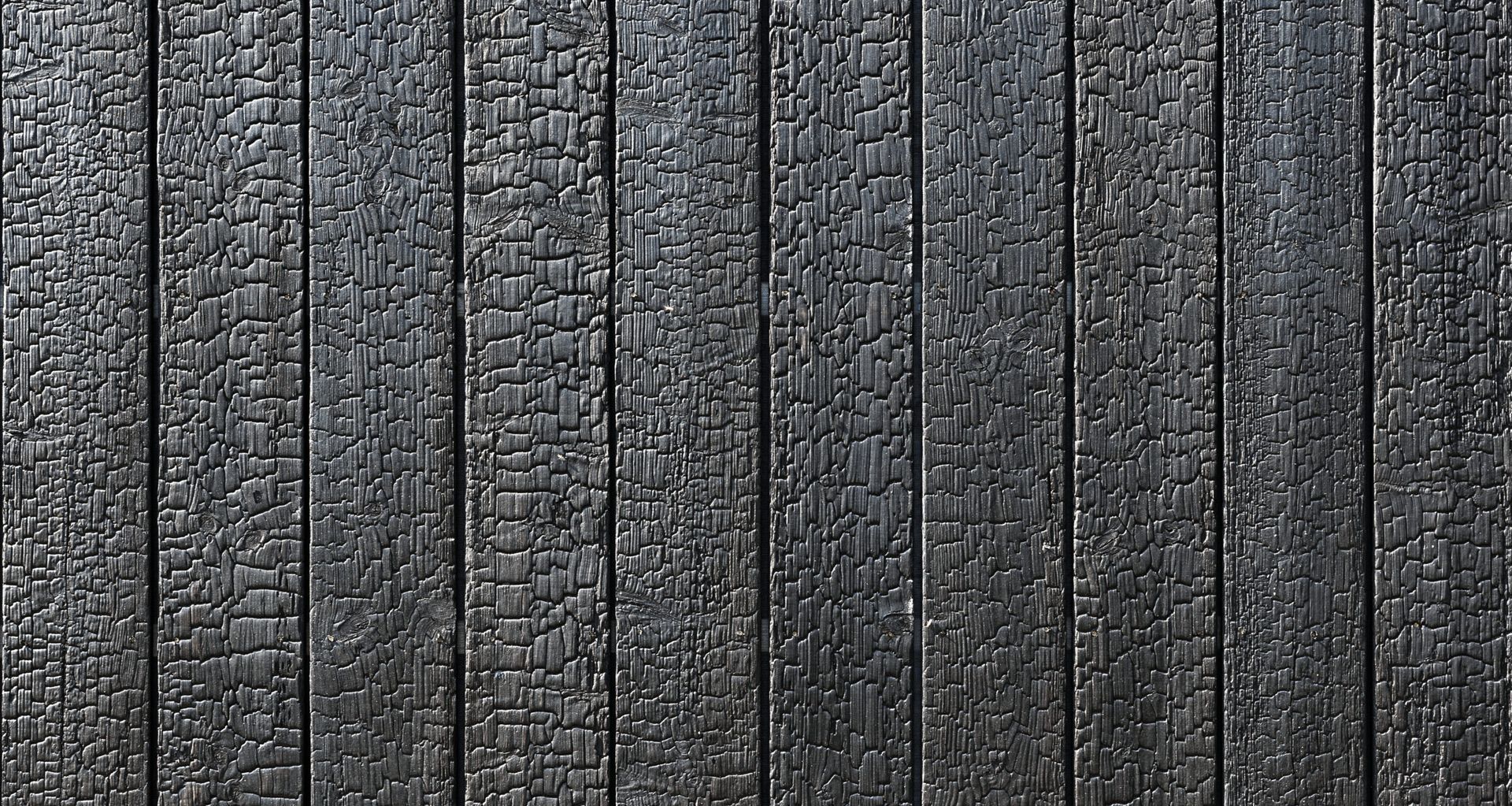Contemporary Cladding Treated with Fire

The timber species selected to manufacture Hurford’s Shou Sugi Ban is ethically sourced and processed by Hurford’s locally owned and operated facility in Queensland, Australia. Favourably sort after for its natural qualities and unique appearance, Cyress, Callitris glaucophylla is highly durable and a naturally termite resistant species. Applying the fire treatment forces an additional barrier of protection against insect attack and decay, furthermore increasing the species overall durability. Durable Australian Hardwoods and BAL-29 Australian Hardwoods are also available to select.
Hurford’s uses a modernised Shou Sugi Ban technique, that evenly chars the face of the board. Shou Sugi Ban Refined Architectural Cladding is supplied pre-oiled to assist in the protection from aging and colour change. During installation it is required you coat any sawn cut exposed ends with Feast Watson Timber and Deck Stain, Black Japan.
Once Shou Sugi Ban Refined Architectural Cladding is installed, you need to apply a second coat of Feast Watson Timber and Deck Stain, Black Japan. Please refer to the DESIGNING tab under Maintenance for more information.
Hurford’s Shou Sugi Ban Refined Architectural Cladding, is an aesthetically pleasing yet durable façade option.
Shou Sugi Ban: A brief history.
Shou Sugi Ban, also known as Yakisugi, derives from an ancient Japanese exterior cladding treatment used to preserve wood by charring it with fire. The treatment was introduced after Japan fell into short supply of driftwood which was collected from the coastlines for its prized appearance and durability after enduring a natural treatment process of saltwater, surf and sun.
Traditionally the timber used for charring was ‘Sugi’ wood, Cryptomeria, commonly known as Japanese Cedar which was used for residential exterior cladding, fencing and decking applications.
The term Shou Sugi Ban 焼杉板 simply translates to ‘burnt cedar board’.
Features
Achieve great design without great effort by integrating our charred timber cladding into your next designs facade.
Why choose Hurford’s Shou Sugi Ban Refined Architectural Cladding?
Hurford’s are one of the oldest companies in the Australian timber manufacturing business. Our love and expertise for drying and manufacturing timber products along with our heed for innovation in our industry subsequently fuels our drive to produce quality timber products, and in this case, a quality timber system.
Hurford’s Shou Sugi Ban Refined Architectural Cladding is a complete solution for any wall, offering not just a precision milled piece of charred timber cladding but also the detailed trims to ensure a streamline finish and watertight result.
Profile Designs Coulee
Hurford’s Shou Sugi Ban profiles collective features include:
Relief grooves which are designed to take the stress out of the cladding, reducing the effect of warping and cupping
Screw location line indicates exactly where to fix the cladding board, allowing the next row to slide over the existing board and create a secret fix finish.
To allow the correct expansion between each board, use the locating shoulder engineered in the profile.
Timber Designs
Hurford’s Shou Sugi Ban trims provide a streamline finish and play an integral part in ensuring a water tight finish. All aluminium trims are factory fitted with waterproof gaskets* designed to decrease the on-site sealing process, and reduced the delivery of loose materials.
* 9mm x 1.6mm gaskets are factory fitted. Additional foam gaskets, to form second moisture barrier, are available in rolls for on-site installation, or alternative sealant method can be implemented.
Features: End Matching & Moisture Barrier System
End Matching
Utilising a specially developed end match system for external use, Hurford’s Shou Sugi Ban endmatch profile has a micro bevel edge designed to encourage water to drain away from the join. Applying a bead of sealant to the join at installation stage eliminates moisture transfer and ensures a watertight connection.
End matching the product means the boards can be fixed mid stud, eliminating the need to dock and create volumes of waste, saving up to 10% of the product that previously would have been thrown away. Not only does this save costs, it’s a better for our environment with less resource being used.
Shou Sugi Ban Moisture Barrier System
All trims in the Hurford’s Shou Sugi Ban Cladding range feature a factory fitted seal, the foam gaskets compress and expand with timber movement, an extra safeguard against the Australian storm season. Factory fitted gaskets eliminate the on-site sealing process, reducing labour costs. The Moisture Barrier System does not eliminate the need for good building practice and meeting the Building Code of Australia.
